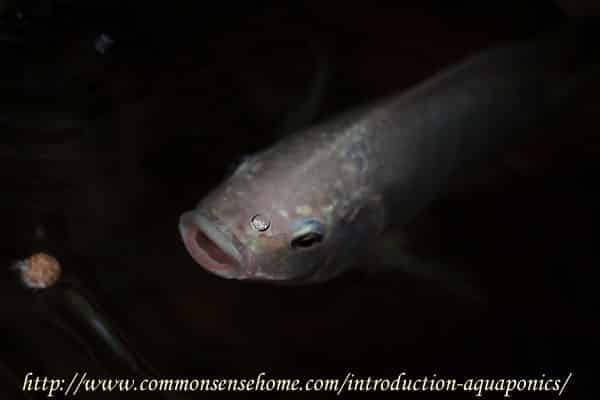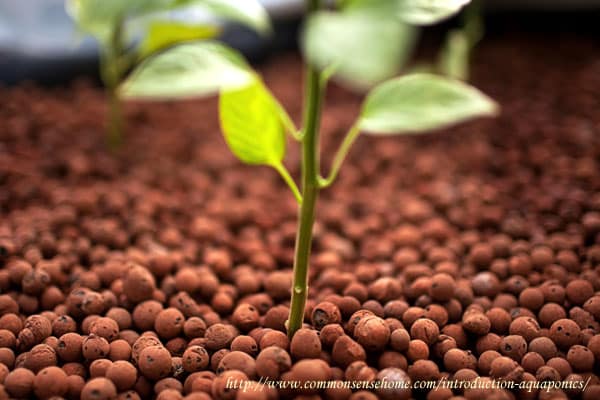Tree bandage product review, Treat tree wounds
Featured Posts
Tree Wound Care
Treating a Tear Out Wound
Tree bandage product review, Treat tree wounds
Tree bandage product review, Treat tree wounds


Motherboard TV: The Thorium Dream (Documentary)

This Supermarket Runs on Rotting Food

UK giant Sainsbury's knows what to do with its leftovers
The UK supermarket chain Sainsbury's is setting an example in sustainability by transforming its own food waste into energy. A store in Cannock, in central England, is now run entirely on electricity generated from its own recycled refuse, marking the first time a major retailer is not reliant on the national grid for its power.
Here's how it works: Any food that can't be donated to local charities for human consumption or turned into animal feed is transported to a nearby anaerobic digestion (AD) plant run by waste management company Biffa. The food waste is converted into Biomethane gas, which is used to power the store.
A 1.5-kilometer cable (that's less than a mile, for you metric-phobes) connects the processing plant to the Sainsbury's, thus very literally closing the loop on food recycling.
This remarkable model may not work everywhere, but it certainly offers grounds for optimism.
As Richard Swannell, a director at Wrap, a government-funded organization that promotes recycling and sustainable business, told the BBC, "There are now 60 AD plants recycling food waste, which can process up to 2.5 million tons of food waste per year and generate enough renewable electricity to power a city three times the size of Cannock."

Labels:
Green Buildings,
Green Energy,
Recycle,
Research,
Self Sufficiency
This Gadget Makes Gallons of Drinking Water Out of Air

Introduction to Aquaponics: Growing Fish and Vegetables Together
What if I told you that you could catch fish for dinner right in your own backyard? And if you did, what if I told you that right up until you caught those fish, they were growing the veggies for the rest of your dinner? Would you believe me? You should! This is all within reach using a new style of gardening called Aquaponics.
What is Aquaponics?
Aquaponics is, at its most basic level, the marriage of aquaculture (raising fish) and hydroponics (growing plants in water and without soil) together in one integrated system. The fish waste provides organic food for the growing plants and the plants naturally filter the water in which the fish live. The third and fourth critical, yet invisible actors in this symbiotic world are thebeneficial bacteria and composting red worms. Think of them as the Conversion Team. The beneficial bacteria exist on every moist surface of an aquaponic system. They convert the ammonia from the fish waste that is toxic to the fish and useless to the plants, first into nitrites and then into nitrates. The nitrates are relatively harmless to the fish and most importantly, they make terrific plant food. At the same time, the worms convert the solid waste and decaying plant matter in your aquaponic system into vermicompost.
What Types of Fish Can You Use in Aquaponics?
Any type of fresh water fish works well in an aquaponic system. Tilapia is perhaps the most widely grown aquaponics fish, but aquaponic gardeners are also growing catfish, bluegill, trout, and even red-claw crayfish. Not interested in eating your fish? No problem! Koi, goldfish, and any decorative fresh-water fish you would purchase from a pet store work as well. In selecting your fish, however, you do want to pay attention to the temperature at which they both thrive and survive. Tilapia, for example, can survive down to temperatures in the low 60s, but they won’t thrive until they reach the mid 70’s. In contrast, trout will survive up to a maximum temperature of 65, but won’t thrive until their water is in the high 40s to low 50’s.
What Types of Plants Can You Grow in an Aquaponic Garden?
There are also only a few limits to the types of plants you can grow in an aquaponics system. In fact, the only categories of plants that won’t thrive in an aquaponics system are plants like blueberries and azaleas that require an acidic environment to thrive. This is because aquaponic systems stay at a fairly neutral pH and therefore are a poor environment for plants requiring a pH of 4.0 – 5.0.
So can all of this work in any climate? Absolutely…with some protection. A backyard greenhouse is ideal because not only can you create an ideal environment for your fish and plants, but the sunlight is free! As an added bonus, all the water in the fish tank, sump tank and grow beds creates thermal mass in your greenhouse which helps moderate temperature extremes. If you aren’t fortunate enough to have a backyard greenhouse, you can also grow inside. Many aquapons have dedicated their garages and basements to their aquaponics systems!
So can all of this work in any climate? Absolutely…with some protection. A backyard greenhouse is ideal because not only can you create an ideal environment for your fish and plants, but the sunlight is free! As an added bonus, all the water in the fish tank, sump tank and grow beds creates thermal mass in your greenhouse which helps moderate temperature extremes. If you aren’t fortunate enough to have a backyard greenhouse, you can also grow inside. Many aquapons have dedicated their garages and basements to their aquaponics systems!
Benefits of Aquaponic Gardening
Here is the rest of the good news about aquaponics:
- Aquaponic Gardening enables home fish farming. You can now feel good about eating fish again.
- Aquaponic Gardening uses 90% less water than soil-based gardening because the water is re-circulated and only that which the plants take up or evaporates is ever replaced.
- Aquaponic Gardening results in two crops for one input (fish feed).
- Aquaponic Gardening is four to six times as productive on a square foot basis as soil-based gardening. This is because with aquaponic gardening, you can pack plants about twice as densely as you can in soil and the plants grow two to three times as fast as they do in soil.
- Aquaponic systems only require a small amount of energy to run a pump and aeration for the fish. This energy can be provided through renewable methods.
- Aquaponics does not rely on the availability of good soil, so it can be set-up anywhere, including inner city parking lots, abandoned warehouses, schools, restaurants, home basements and garages.
- Aquaponic Gardening is free from weeds, watering and fertilizing concerns, and because it is done at a waist-high level, there is no back strain.
- Aquaponic Gardening is necessarily organic. Natural fish waste provides all the food the plants need. Pesticides would be harmful to the fish so they are never used. Hormones, antibiotics, and other fish additives would be harmful to the plants so they are never used. And the result is every bit as flavorful as soil-based organic produce, with the added benefit of fresh fish for a safe, healthy source of protein.
- Aquaponics is completely scalable. The same basic principles apply to a system based on a 10 gallon aquarium and to a commercial operation.
Aquaponic gardens are straight forward to set up and operate in your own backyard or home as long as you follow some basic guidelines.
Download a FREE Guide to Aquaponics
If you want to learn more, we have just launched a free Creative Commons guide called “The 12 Essentials for Aquaponic Gardening Success” which you can download here. I have also written a book called “Aquaponic Gardening: A Step by Step Guide to Growing Fish and Vegetables Together” as resources. The main point is to set up a system soon and become food independent! There is simply no reason to rely on the fish counter anymore.
This is a guest post by Sylvia Bernstein, Founder and President of TheAquaponicSource.com – Aquaponics Gear and Resources.
Sylvia has been professionally involved in aquaponics and hydroponics since early 2003. She wrote the award-winning and best-selling book, “Aquaponic Gardening: A Step by Step Guide to Growing Fish and Vegetables Together.” She co-founded The Aquaponics Association and co-organized the first annual Aquaponics Association Conference in 2010. The Aquaponics Source also founded and runs the Aquaponic Gardening Community, which is the largest and most active aquaponics forum in North America. Their headquarters in Longmont, CO is the largest (non-farming) aquaponics facility in the Northern Hemisphere (7600 sq ft), and includes a retail store, systems showroom, training center, and a research and development lab. You can follow The Aquaponics Source on Facebook at http://www.facebook.com/TheAquaponicSource and Twitter at@aquapon.
All photos courtesy of The Aquaponics Source.
You may also enjoy other posts in our Getting Started Series.

Build Rock Walls – With NO Concrete!
 Do you have a bunch of rocks around your property and wish they were doing something more useful than just sitting there? How about the need for a retaining wall or a privacy fence? Well, with just a little patience and a very little money you can put those two things together and make that wall out of those rocks – with no concrete work involved!
Do you have a bunch of rocks around your property and wish they were doing something more useful than just sitting there? How about the need for a retaining wall or a privacy fence? Well, with just a little patience and a very little money you can put those two things together and make that wall out of those rocks – with no concrete work involved!Sponsored Link
That may sound like crazy talk, but you may not be familiar with a fast growing method of building and landscaping called the gabion. Gabion is an Italian word meaning “big cage” and that’s just what it is – a wire mesh cage, usually filled with rock, but as you can see from the examples below, they can hold so much more.
You can buy pre-fabricated gabions from several companies, but they are simple to make. Please don’t use this article as an instruction for construction – do your research and, now that you know what gabions are, you will find plenty of step-by-step instructions that will walk you through the quick and safe construction of these cool building blocks.
You can build with fat wire cages and stack them on one another, wiring them together as you go. It’s not about just throwing the rocks (or whatever you use to stuff them) in the wire cage. It’s a bit of an art to make sure they are packed tightly and consistently to achieve a “pleasing” visual effect. You can build the gabions taller and of less width, but that will require the gabions to built around a steel post set in concrete. (The steel post hides within the gabions as you stack them.)
The instructions we found most helpful call for either 3 inch by 3 inch or 2 inch by 2 inch steel mesh. This type of mesh comes in large pieces (usually 5 feet by 12 feet) so it’s kind of a hassle to get them to your house if you don’t own a truck. Cut the mesh to size and connect the sides and bottom together with either spirals of wire or you can even use rebar ties – which are cheap. This type of mesh is also known as cattle panel.
Examples of Building With Gabions

Labels:
DIY,
For Your Home,
Homesteading,
HOW TOs,
Research
Subscribe to:
Posts (Atom)
Related Channels
Faith Networks
- Faith Networks Main Page
- The Discipleship Series
- FN-TV
- Christian Views
- Christian Faith Blog
- Faith Networks Missions
- BWP-MediaOne Productions
- Causes & Community
- Advocates For Abstinence
- Disaster Relief & World Missions
- Faith Based Ministries
- Historical & Theology
- Theories, Truths & Endtimes Study
- Healthy Living - Good Intentions
- Causes.com
- Public Info
- Blog
- Media
BWP ENT
- The Arts
- Fashion & Performing Arts
- Poetry & Quotes
- Music Weekly
- Project_7
- Healthy Living - Good Intentions
- Green News
- Causes & Community
- Disaster Relief & World Missions
- Military Digest
- Entertainment Weekly | Media Corner
- Travel & Adventure
- Tech Blog
- Amazing Transportation
- Biz Blogger
- BWP-MediaOne Productions
- Internet Source Media
- Network Promotions
- Timeline of Events | World History















